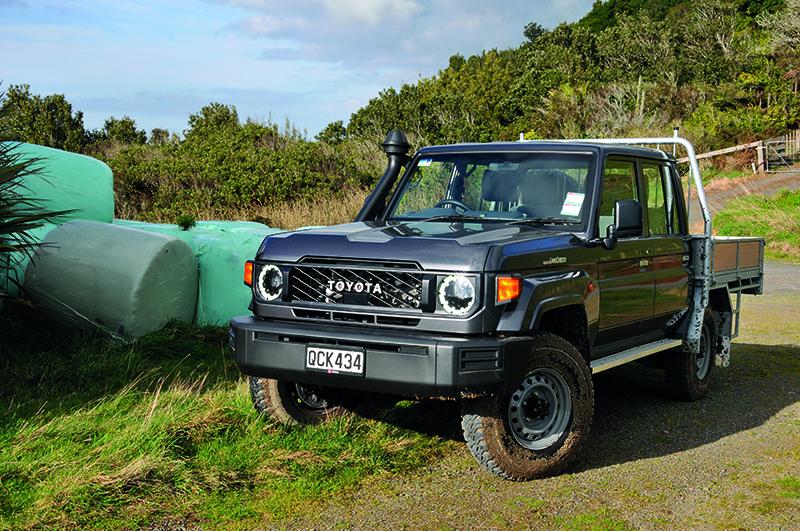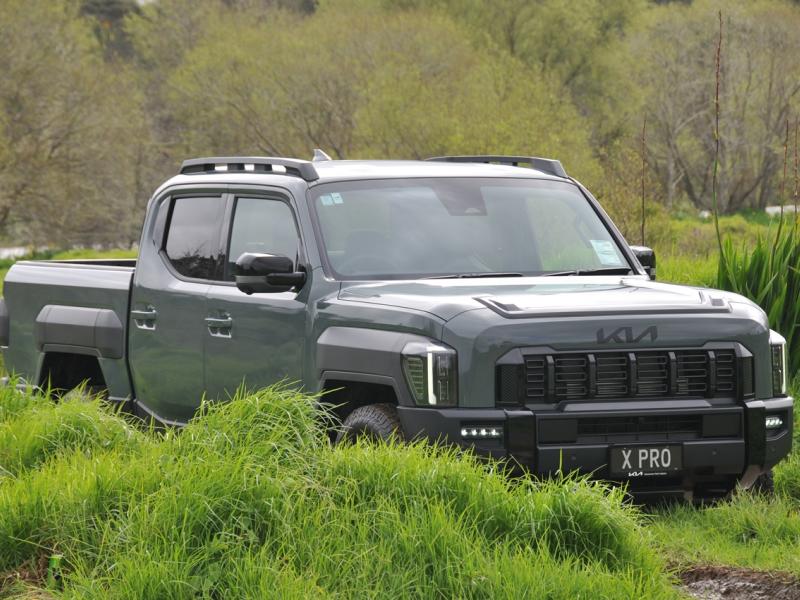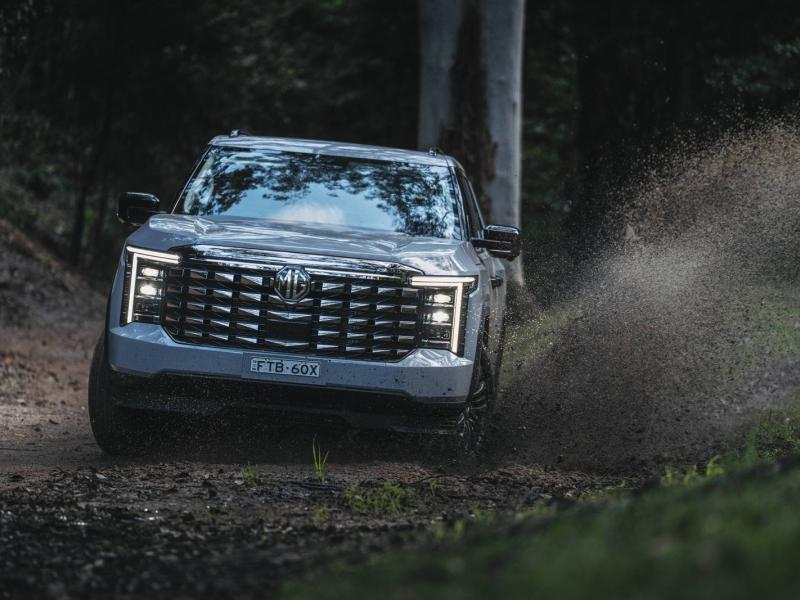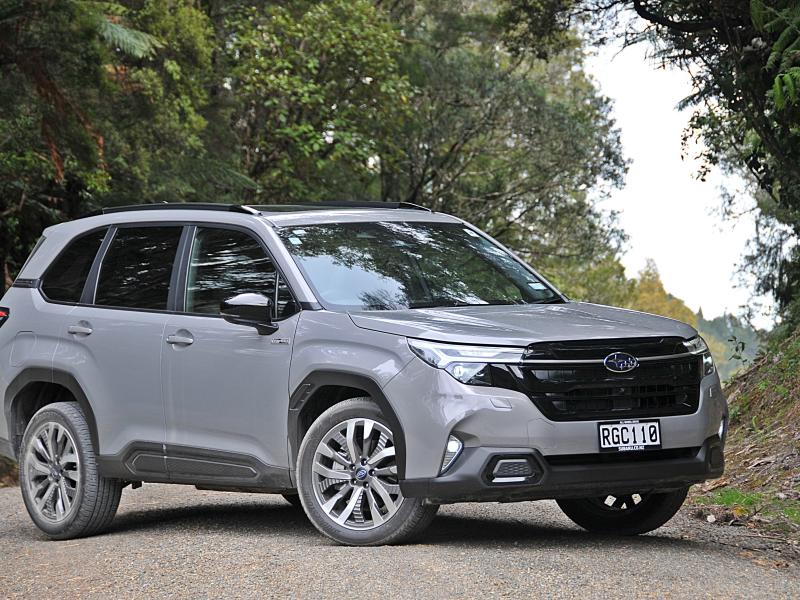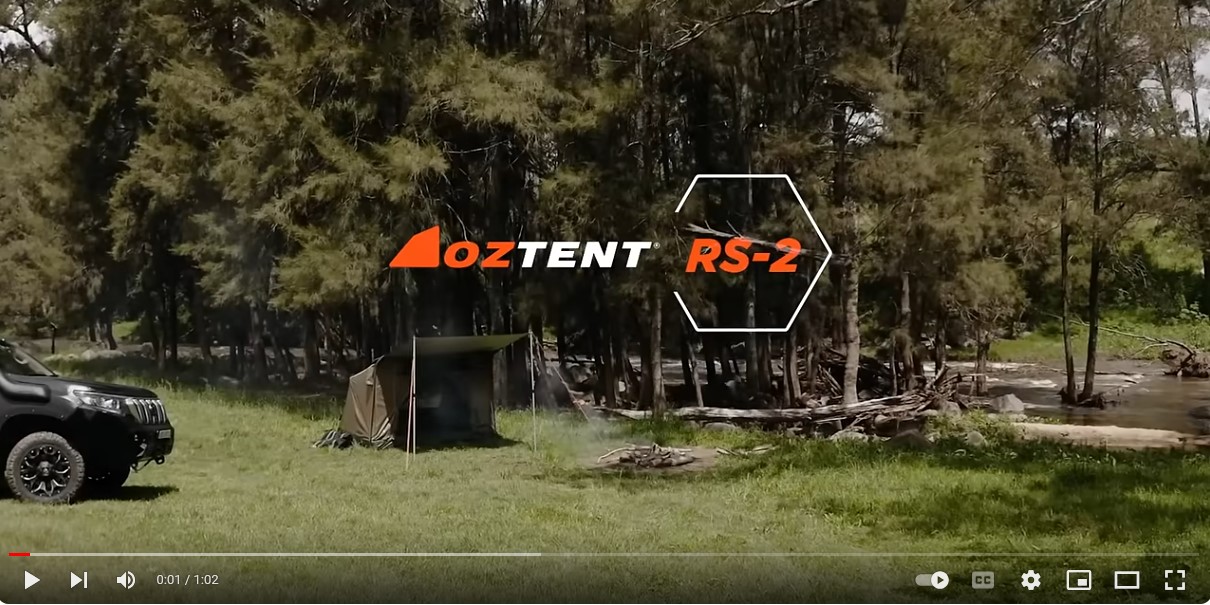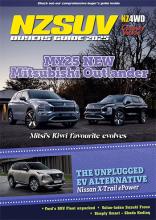It’s as tough as its squared-off profile, brand heritage and 40-year model history suggest. Real tough.
Quite simply, Toyota’s Land Cruiser 70 Series has been engineered to be the toughest Toyota on the planet. Mining companies using the Hilux in the dusty outback of Australia end up switching to the 70 Series when they break their Hiluxes.
Over there, the 70 is truck of choice on bush blocks and in the thick red dust of outback farms. It literally has no direct rival – once, the old Defender or Nissan’s GU Patrol was in the same category, but no more. The coming Ineos Quartermaster might tempt a few, but it’s likely to be significantly more expensive.
So, they don’t come much more tried-and-tested than the 70 Series, but this updated model adds (some) modern tech to the traditional workhorse.
The outgoing 70 was a favourite among rural contractors, farmers and tradies. With its renowned 4.5 litre turbodiesel V8 producing 151Kw and an impressive 430Nm of torque, it had the grunt needed to do almost anything asked of it. How much better, then, that its replacement has as much power and more torque from just 2.8 litres and four cylinders? Slotting in the engine from the current Hilux gives the Cruiser 500Nm at 3,400rpm and 150kW between 1,600rpm and 2,800rpm – and as anyone who drives off-road will agree, it’s the torque that gets the job done.
Equal power, more torque, and better fuel economy. The four-cylinder engine will achieve 10.6l/100km, impressive for a vehicle of this type. The V8’s official figure was 12.0l/100km.
The auto transmission is a six-speed, which means the engine’s torque makes itself known at each ratio change. There’s a 2-hi/4-hi/4-lo transfer case – conventional enough – and the tough, workday focus of the truck is spelled out by a rotary dial on the dash that locks front and rear diffs in slippery off-road going. More useful technology: there’s a power/haul mode for a more responsive throttle and different transmission shift mapping, and there is a proper manual mode for selecting (and holding onto) a gear of your choice. The manual mode is used through the main shifter, and is push forward to shift up, pull back to downshift.
It has rigid axles, leaf springs at the back, and hydraulic power steering with a massive 14.4m turning circle, although interestingly it does have rear disc brakes where many utes still use drums.
The four-cylinder version is around 60kg lighter than the V8.
Stock, it has a heavy duty 3510kg gross vehicle mass (GVM) and a 2,130kg kerb weight, leaving the best part of 1,400kg for payload including tray. Meanwhile, its 7,010kg gross combined mass (GCM) means it can legally tow at 3,500kg capacity and be at maximum payload at the same time.
The old school theme continues up front, with the LC70 the only new vehicle on the market still offering manually locking hubs. Use the wheel wrench to switch from Auto (hubs lock when the transfer case engages 4H or 4Lo), to Lock.
Engage 4WD using the second shifter. With ground clearance of 316mm, low range, front and rear diff lockers fitted, not much will stop this truck.
The tyres are Dunlops called Road Grippers and are one of the few disappointments of the spec. Noisy and vague on tarseal, they weren’t much better off-road. Up on some narrow muddy tracks off Matahuru Gorge, they clogged up and became slicks. A good chance to upgrade the vehicle’s ability with a small spend.
Niceties are focussed on the essentials. The reversing camera is set close above the towball, and can be relied on when reversing up to a trailer. There are auto-dipping headlights, Apple and Android audio connections, autonomous braking, lane departure alert and road-sign recognition. Importantly, there’s hill descent control.
Inside, updates feel both minimal and significant. Significant because this kind of thing doesn’t happen often, and we do have a few extra creature comforts added in. It is only a few, because the 70 is still true to its old-fashioned four-wheel-drive origins.
The cabin is still tall and narrow, the windscreen old-school upright and there’s an enduring cloth trim on basic manually adjustable seats.
Floor coverings are easy-clean vinyl, protected by chunky rubber mats. The door ‘cards’ are also vinyl covered (clean ‘em with a warm squeegee) and devoid of funky pockets in which to lose important stuff like docking rings or rifle magazines.
The seats are in cloth, comfortable once the climb in has been mastered. The driving position is very upright and gives excellent forward views both on and off the tarmac. That new bonnet is interesting – it gains a bulge to accommodate the new, taller engine, but is sculpted at each edge and down the middle to maximise the driver’s view as they approach obstacles. It’s lost the cool bonnet scoop of the V8 version though.
The steering wheel is very reminiscent of that in mid-range Hilux models. It is adjustable for rake and reach, and we ended up taking it as high as it would go.
The speedometer design is retro-cool in a 1970s way, and its styling will be familiar to anybody who has sat behind the wheel of the original 70 Series – and even the FJ40. The trip computer and odometer and a digital speedo sit off to the right.
There’s no navigation, but what farmer needs that out in the paddocks?
The dashtop is very shallow and definitely more truck than SUV in its layout and trims. The fascia also keeps it simple with a basic screen, old-school manual AC controls, and the touchscreen is quite small. Again, this reflects the intended purpose of the truck.
New Zealand goes one-up on Australia in the cab: our Cruiser comes with electric windows, theirs has very old school manual window winders.
The flat deck on our test vehicle is optional at extra cost. As fitted, it’s perfect for feed, tools or dogs. It’ll be a popular choice where the vehicle is used on the farm, especially if also fitted with a stock cage enabling the owner to move lambs and calves – or even pigs – around the property without needing a trailer. The 70 is also very popular with tradies and mechanics. Add a service body and create an all-terrain mobile workshop.
Out on the road, the 70 can feel gruff and heavy to drive. The engine growls, the turbo has a faint mid-boost whistle, and the steering is high-geared, best for tricky farm work.
There’s never any doubt that this is a 4WD truck. At the same time, the Land Cruiser is also supremely capable as a heavy-duty utility vehicle. There is a reason why farmers and miners flock to the 70 Series. It shuns high-end features in exchange for hardened mechanicals that can keep coming back for more, all while hauling a huge amount of gear. It can handle being loaded to the gills and driven at across the roughest of terrains. Getting slippery? Switch-in the front and rear diff locks and it’s a revelation in the mud.
We headed into the northern Waikato and the narrow, slushy rural roads in the hills behind Matahuru to put the 70 in context and it did not disappoint. Off the tarseal, the slightly choppy ride is softened, and the steering comes into its own when tracks get tight. Slippery downhills are a breeze with diff locks engaged, manual gear shifting holding the transmission in lower ratios and hill descent control available if needed. We didn’t actually find anything that called for the HDC.
So, do we like tough old-school 4WDs? Or are we slaves to the plush spec of the newer offerings in the category?
The Aussies would argue a ‘real’ 4WD ute is essential in rural towns and on the farm. Their media might describe them as ‘brutally crude’, but over there the 70 Series consistently outsold the first-generation Volkswagen Amarok, an all-new ground-up ute design from the German automotive giant that offered significantly more comfort, refinement and on-road performance.
There’s evidence the same devotion exists here. For the Land Cruiser, things like refinement don’t matter as much as durability and reliability.
For enthusiasts, remember: beyond a massive range of OEM add-ons available from Toyota there’s also a huge, innovative and thriving aftermarket industry offering accessories for the 70 Series Land Cruiser. Google is the personalisation gateway, just try it.
In summary, don’t look for the 70 in downtown environments. It’ll be out in the hill country, working hard in the muck and mud. There is simply no other vehicle that does what a 70 Series will do. This is a 4WD that will outlive its owners.
The highlights:
• That new drivetrain – grunty four cylinder and an automatic gearbox.
• Those diff locks. Excellent.
• “Trayability”. Choose the handy flat deck or go for a service body.
• LED headlights are a big improvement. They look cool too.
• It’s still the benchmark of work utes for payload, towing capacity and GCM.

